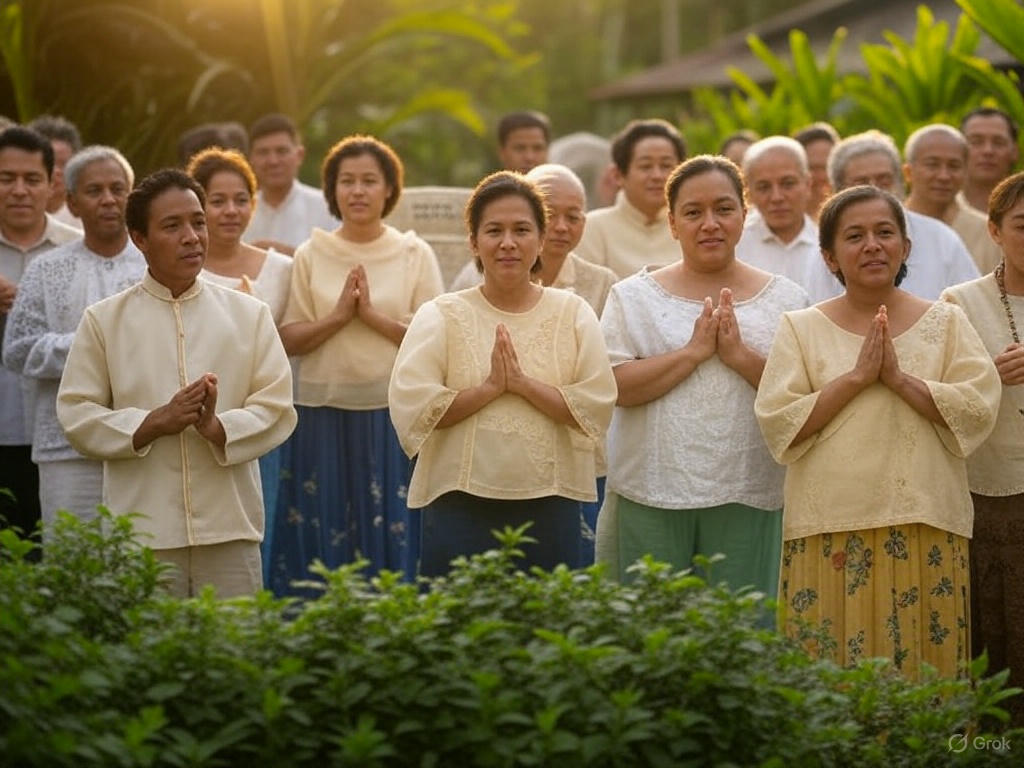
Below is an article about the “Aba Po Santa Mariang Hari” prayer in Tagalog, written in English for clarity and accessibility.
The “Aba Po Santa Mariang Hari” Prayer: A Filipino Devotion to Mary
In the rich tapestry of Filipino Catholicism, few prayers resonate as deeply as the “Aba Po Santa Mariang Hari,” the Tagalog rendition of the “Salve Regina” or “Hail Holy Queen.” This prayer, a cherished Marian hymn, reflects the profound devotion of Filipinos to the Virgin Mary, whom they honor as the Mother of God and a compassionate intercessor. Recited at the conclusion of the Holy Rosary and during Compline (night prayer) in the liturgical calendar, it holds a special place in the spiritual lives of millions across the Philippines.
Historical Roots
The “Aba Po Santa Mariang Hari” traces its origins to the “Salve Regina,” a Latin hymn traditionally attributed to the 11th-century German monk Hermann of Reichenau, though its authorship remains debated among scholars. Composed during the Middle Ages, the “Salve Regina” became one of four Marian antiphons sung at specific times in the Catholic liturgical year. It is traditionally chanted from the Saturday before Trinity Sunday until the Friday before the First Sunday of Advent, often as part of Compline, the final prayer of the day.
When Spanish missionaries arrived in the Philippines in the 16th century, they brought this devotion to the islands. To make it accessible to the native population, the prayer was translated into local languages, including Tagalog. The result was the “Aba Po Santa Mariang Hari,” a heartfelt adaptation that retains the essence of the original Latin while embracing the linguistic and cultural nuances of the Filipino people.
The Prayer in Tagalog
Here is the full text of the “Aba Po Santa Mariang Hari” as commonly recited:
Aba po, Santa Mariang Hari,
Ina ng Awa, ikaw ang kabuhayan at katamisan;
Aba, pinananaligan ka namin.
Ikaw nga ang tinatawagan namin,
Pinapanaw na taong anak ni Eva.
Ikaw rin ang pinagbunbuntuhang hininga namin
Ng aming pagtangis dito sa lupang bayang kahapis-hapis.
Ay aba, pintakasi ka namin,
Ilingon mo sa amin ang mga mata mong maawain,
At saka kung matapos yaring pagpanaw sa amin,
Ipakita mo sa amin ang iyong anak na si Hesus.
Santa Maria, Ina ng Diyos,
Maawain, maalam at matamis na Birhen.
In some traditions, it is followed by a versicle and response:
V. Ipanalangin mo kami, Reyna ng kasantusantuhang Rosaryo.
R. Nang kami’y maging dapat makinabang ng mga pangako ni Hesukristo.
Meaning and Structure
The prayer is a poetic plea to Mary, addressing her as “Santa Mariang Hari” (Holy Queen Mary), “Ina ng Awa” (Mother of Mercy), and a source of “kabuhayan at katamisan” (life and sweetness). It portrays humanity as “pinapanaw na taong anak ni Eva” (banished children of Eve), mourning in a “lupang bayang kahapis-hapis” (land of sorrow). The faithful implore Mary, their “pintakasi” (advocate), to turn her merciful eyes toward them and, after their earthly exile, to reveal her son, Jesus.
The use of “Hari” (King) instead of “Reyna” (Queen) is a distinctive feature of this Tagalog translation. This choice reflects historical linguistic influences from Spanish colonization, where “hari” was a gender-neutral term for a ruler in pre-colonial Tagalog, unlike “reyna,” a borrowed Spanish word. Far from a mistake, it underscores Mary’s exalted status as a sovereign figure, transcending earthly gender norms in her divine role.
Cultural Significance in the Philippines
For Filipinos, the “Aba Po Santa Mariang Hari” is more than a prayer—it’s a cultural and spiritual anchor. It is deeply tied to the practice of the Rosary, a devotion introduced by the Dominicans and embraced widely across the archipelago. The prayer’s final position in the Rosary sequence symbolizes a climactic entrustment to Mary’s care, a fitting end to meditations on Christ’s life.
The language of the prayer resonates with Filipino sensibilities. Terms like “pinananaligan” (one we rely on) and “pintakasi” (patroness or advocate) evoke the communal trust and familial bond Filipinos feel toward Mary. In a nation often tested by natural calamities, economic struggles, and historical upheavals, this prayer offers solace and hope, reinforcing the belief that Mary intercedes for her “sorrowful children.”
A Living Tradition
The “Aba Po Santa Mariang Hari” is not a relic of the past but a living tradition. It is recited in homes during family Rosary prayers, sung in churches as a hymn, and invoked in times of personal or collective need. Its melody, often hauntingly beautiful, enhances its emotional depth, making it a staple in Filipino religious music.
Debates occasionally arise about modernizing the prayer—some suggest replacing “Hari” with “Reyna” for clarity. Yet, many defend its traditional form, arguing that it preserves a piece of Filipino Catholic heritage, blending indigenous roots with colonial influences.
The “Aba Po Santa Mariang Hari” is a testament to the enduring faith of the Filipino people and their unique expression of devotion to Mary. Through its words, they find comfort in her mercy, strength in her advocacy, and a promise of salvation through her son. As long as Filipinos turn to prayer in times of joy and trial, this Marian hymn will remain a cherished echo of their spiritual identity.